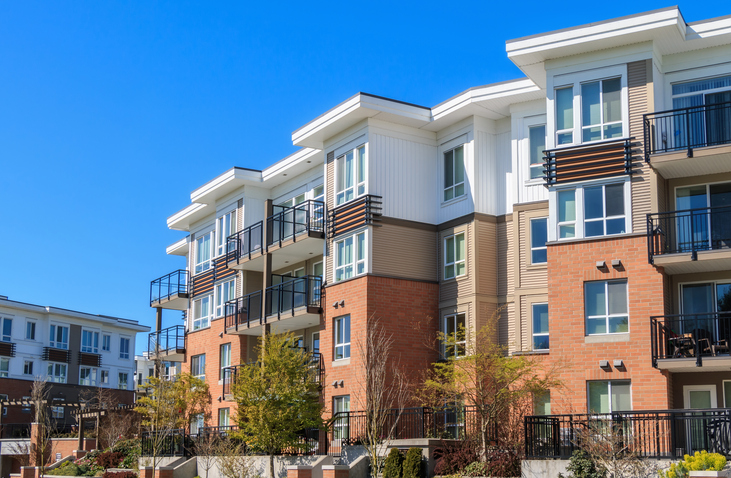Food Delivery and the Business Auto Policy
Thousands of restaurants engage in food delivery. This is, by no means, a new phenomenon. With that reality in mind, two questions arise: Is the restaurant covered for food delivery if it does NOT have a business auto policy; and how does a restaurant’s business auto policy respond to food delivery when they have the coverage?
|
Thousands of restaurants engage in food delivery. This is, by no means, a new phenomenon. With that reality in mind, two questions arise:
What appears to be two simple questions simply aren’t. The simple answer is, yes, the restaurant is covered for its auto liability exposure – well, maybe there is coverage. The more complicated answer is, yes, the restaurant is covered, but is that coverage adequate for the restaurant and the employee? Let’s begin by looking at the reality of coverage when the employee is using his or her personal auto to make deliveries for the restaurant. The questions that must be answered include:
Coverage in the PAP Decades ago, pizza and maybe Chinese food delivery began the PAP’s delivery coverage debate. Does the personal auto policy cover food delivery? Note that as this question is answered, Grub Hub, Uber Eats and every other such app-based food delivery service are completely ignored. The focus here is solely on food delivery by the employee of one restaurant. PAP Exclusions of Interest Whether the PAP provides liability coverage for food delivery is a function of two exclusions: the business use exclusion and/or the public or livery conveyance exclusion. Business Use Exclusion: The business use exclusion is a non-factor in this discussion. The PAP excludes the use of an auto when being used in an auto-related business (sales, service, repair, etc.), unless the car is owned by the named insured, a family member or others provided the car is listed on the PAP. So, this exclusion can be ignored. Public or Livery Conveyance Exclusions: This exclusion may have more teeth. The applicable part of this exclusion reads: EXCLUSIONS A. We do not provide Liability Coverage for any “insured”: 5. For that “insured’s” liability arising out of the ownership or operation of a vehicle while it is being used as a public or livery conveyance. Does an employee delivering food qualify as either public or livery conveyance? If so, the PAP provides no coverage. Although generally phrased as one concept, public conveyance and livery conveyance are actually two different threshold requirements (notice the “or” between the terms). Let’s define both terms to clarify coverage (or the lack thereof).
Is food delivery for one restaurant considered “public conveyance”? No, the vehicle is not available for public use; it is being used by the employee on behalf of his/her employer only, and only for a single purpose – food delivery. Making the vehicle available for public use is what the ride sharing and food delivery apps do. When working for one restaurant, the vehicle is not available to others (to the public). However, does food delivery trigger the “livery conveyance” exclusion? The employee is carrying property (namely food), but is the cost of the food considered a fee? And considering fees, does charging a separate delivery “fee” make a difference? Courts seem to agree that an employee delivering food for an employer is not livery conveyance, even if a separate delivery fee is charged. In a livery conveyance, the fee is charged by the carrier as their remuneration for providing the service. In pizza delivery or food delivery, the fee is charged by the employer for its own purposes (probably a charge for convenience) and is not necessarily for the benefit of the driver. Remember, the public or livery conveyance is intended to exclude coverage for those who are in a common-carrier-like business, not the person using their personal auto to delivering property for his or her employer. This discussion is a long way around to answering the question of coverage in the PAP. Yes, there is coverage for food delivery in the PAP. But this doesn’t mean carriers won’t try to utilize the public or livery conveyance exclusion if the injury is bad enough. BAP and Employee Use of a Personally Owned Auto If the employer/restaurant has a business auto policy, does that policy extend coverage for the employee’s use of their personal auto for any reason, particularly to deliver food? Secondly, who is covered? Is Coverage Provided? Whether liability coverage is provided by the BAP for an employee’s use of his/her personal auto on behalf of the employer is a function of the coverage symbol or symbols used.
If either of these requirements is met (Symbol 1 or Symbol 9), then the BAP provides coverage for the employee’s use of their personal auto. But that is only part of the issue. Who is covered by the BAP? Who is Covered by the Unendorsed BAP? When the employee is using his or her personal auto on behalf of the named insured only the named insured (the restaurant) is protected by the unendorsed BAP. The exclusion for the employee is clearly stated within the Who is an Insured provision: 1. Who Is An Insured The following are “insureds”: a. You for any covered “auto”. b. Anyone else while using with your permission a covered “auto” you own, hire or borrow except (this means they are excluded from coverage): (1) The owner or anyone else from whom you hire or borrow a covered “auto”. This exception does not apply if the covered “auto” is a “trailer” connected to a covered “auto” you own. (2) Your “employee” if the covered “auto” is owned by that “employee” or a member of his or her household. Again, this means the BAP protects only the named insured restaurant when the employee uses his/her personal vehicle to deliver food. Worse still, because the employee is not an insured in this situation, the employer’s business auto carrier can actually subrogate against the employee. But remember, this is how the unendorsed BAP responds, there is an endorsement that solves this problem. But before we get to the solution, we need to understand how the PAP and BAP dovetail. Which Policy is Primary and Which is Excess? Even though the business is benefiting from the employee’s use of his/her personal auto, the employee’s personal auto policy provides primary coverage in the event of a claim. This primary protection extends to both the employee and the employer. Don’t believe me? Here is the policy language: PART A – LIABILITY COVERAGE INSURING AGREEMENT B. “Insured” as used in this Part means: 3. For “your covered auto”, any person or organization but only with respect to legal responsibility for acts or omissions of a person for whom coverage is afforded under this Part. As is seen in this language, the employee’s personal auto policy extends coverage to the employer for its vicarious liability for the actions of the employee. Although this wording doesn’t specifically state that the PAP is primary, we need only to review the BAP for proof. The Other Insurance provision in the BAP reads: 5. Other Insurance a. For any covered “auto” you own, this Coverage Form provides primary insurance. For any covered “auto” you don’t own, the insurance provided by this Coverage Form is excess over any other collectible insurance. Remember, the PAP is always primary when the policy’s named insured owns the vehicle and it is listed on the personal auto policy. The BAP is excess, but only for the employer’s benefit (unless the policy is endorsed otherwise). Because the PAP is primary, the first issue for the employee and the employer is coverage limits. Are the employee’s PAP limits adequate in the event of an at-fault incident? Remember, both the employee and employer are covered. Consider this scenario, the employee, while delivering food for his/her employer, is involved in an at-fault accident – hitting a surgeon on her way to the hospital. In the accident, the surgeon severely injures her right hand and can no longer perform her surgical duties. Will the insured (the employee) have adequate limits? Probably not (regardless of the amount). If the employee’s limits are exhausted, then the BAP responds on an excess basis (if Symbols 1 or 9 is used) – but only for the employer (in an unendorsed BAP). Let’s throw in another “but” or “what if;” what if the employer doesn’t have a BAP? Let’s end the suspense, this is a very bad situation – for the employer. If the employer is held vicariously liable for the actions of the employee, the employer is financially responsible for damages caused by the employee over and above what the PAP pays. This is true even if there is no business auto policy in place. The lack of insurance does not relieve a legally liable party of its responsibility to the injured party. Legal liability can be direct or vicarious (see the article “How Does a Person Become Legally Liable“). To avoid this out-of-pocket expense, the employer needs a business auto policy to protect its financial assets – at least to the level of coverage. Lest you get jaded and say, “But Boggs, what is the likelihood the employee will hit a surgeon?” Fair question. The victim doesn’t have to be a surgeon, nearly any accident can be financially devastating under the right circumstances. Two recommendations so far:
A Key Endorsement Throughout this article, the fact has been highlighted that the unendorsed BAP does not extend protection to the employee when he/she is using his/her personal auto on behalf of the employer. This lack of employee protection can be detrimental to the employee. As was previously discussed, the BAP insurer can subrogate against (seek recovery from) the employee if the BAP is required to pay to cover the business owner’s vicarious liability for the actions of the employee. Whether the BAP carrier would want the PR storm that comes with this is irrelevant; they can do it, and if the loss is bad enough, they may. But there is a remedy. To fix this gap and keep relations between the employer and employee intact, attach the CA 99 33 10 13 – Employees as Insureds endorsement. As the title suggests, the endorsement extends insured status to employees when driving their personally owned vehicles for the benefit of the employer/insured. But this endorsement does NOT change the order of response. Even when the CA 99 33 is attached, the employee’s PAP still responds as the primary coverage. The BAP remains excess. The difference is this endorsement extends protection from the BAP to the employee on an excess basis. Further, as an insured, the carrier no longer has the ability to subrogate against the employee if the loss requires the BAP to respond as excess. Always attach the CA 99 33 anytime an employee is using his or her personal auto on behalf of the employer, even in non-delivery situations such as are addressed in this article. Takeaways Keys to remember from this article:
Last updated: July 21, 2020 |
Copyright © 2025, Big “I” Virtual University. All rights reserved. No part of this material may be used or reproduced in any manner without the prior written permission from Big “I” Virtual University. For further information, contact nancy.germond@iiaba.net.









